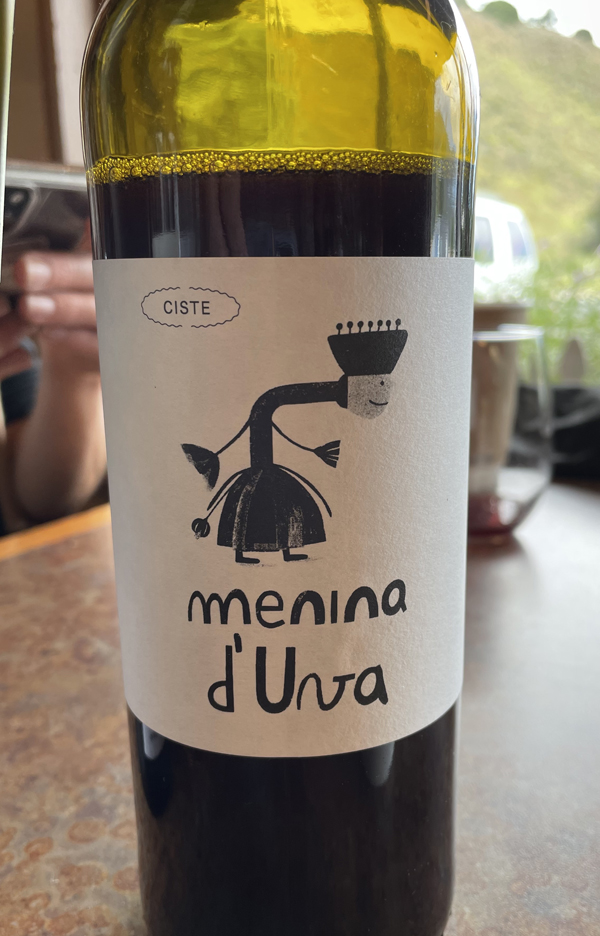2021 Menina d’Uva “Ciste” Vinho Tinto,Trás-os-Montes, Portugal.
A light and juicy quaffable naturally styled red wine from Portugal’s Trás-os-Montes area made from some unique varietals, seeing a co-ferment of 70% red grapes with 30% white grapes, making for a brighter fresher dark ruby wine with a clean red fruited profile. Winemaker Aline Domingues, just 34 years old, a youthful talent and a trained scientist, based in Uva, not far from the Spanish border, spent seven years between the Universities of Paris Diderot, Dijon, Cergy, and Orléans. During that time, she accomplished three Masters degrees in Molecular Biology, Fermentation Science and Quality Health Safety Environment, all before turning her attention to wine. This Ciste Vinho Tinto shows off red currant, plum, cherry and strawberry fruits and a mix of spice, wild herbs and delicate florals, adding a bit of earth, red peach and blood orange, all in a zesty lean frame, it is a wine that enjoys a slight chill and best with a no pretense outdoor meal. This is a country wine that never tries to either serious or geeky cool, it is a wine that just makes you smile and is fun in the glass. After open, this tasty little wine gives more textural quality and plays beautifully with food, it definitely makes me more interested in the rest of the Menina d’Uva wines, which includes a few more reds and a white.
Uva, an ancient village, in Trás-os-Montes, which is very aptly named, meaning “The Lost Corner”, has largely gone unnoticed by the outside world from generations, but has a distinctive terroir that has had wine grapes for quite a while, on the Planalto Mirandês in Portugal’s northeast corner. This Ciste comes from grapes grown on igneous and metamorphic rock-derived clay soils which has an effect that delivers a fruit forward personality, while the Atlantic and continental climate influences add zippy acidity and ripe flavors. Aline Domingues decided, for this wine, to use a mixture of, as mentioned, 70% of the red grapes, Bastardo Preta, a grape that is genetically proven to be Trousseau Noir, native to the Jura region of France) and Negreda (Mouratón in Spanish), and 30% white varietals, including Malvasia, Bastardo Branco, Formosa, and, as Aline notes, some others, but only in minuscule amounts. The wine was completely done with whole bunches and co-fermented, with the gentle maceration and fermentation lasting for only four days and then it was aged exclusively in stainless steel, all to preserve vitality and allowing for a more nuanced delicacy to show off the sense of place. The short time on skins, Aline says, is intended to achieve good fruit and floral extraction, but not have too much carbonic bubble gum or candied elements here, which was successful, as seen here.
($28 Est.) 90 Points, grapelive
